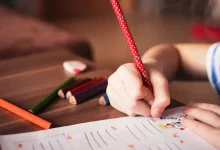Teaching children the alphabet is a fundamental step in their literacy development. The process involves not only helping them recognize letters but also understand their sounds, and how they fit into words. Here is a comprehensive guide on effective methods and strategies for teaching children the alphabet.
Understanding the Basics
The alphabet consists of 26 letters, each with a distinct shape and sound. It is crucial to start with the basics: the names of the letters, their phonetic sounds, and the ability to write and recognize them in various contexts. The teaching process can be divided into several stages:
-
Introduction to Letters: Begin by introducing the alphabet in a fun and engaging way. Use songs, rhymes, and alphabet books to familiarize children with the names and shapes of the letters. The ABC song is a classic tool that helps in memorizing the order of the letters.
-
Phonetic Awareness: Alongside teaching the letter names, it is essential to introduce phonics—the sounds that each letter makes. For example, the letter ‘A’ makes a short /a/ sound as in “apple” and a long /ā/ sound as in “ape.” Associating letters with their sounds helps children in the process of decoding words when they start reading.
-
Visual Recognition: Use flashcards, alphabet puzzles, and wall charts to help children recognize and remember the shape of each letter. Repetition and visual aids are effective in reinforcing their learning.
Methods for Teaching Alphabet
-
Interactive Activities: Hands-on activities make learning the alphabet enjoyable and memorable. Consider incorporating the following methods:
- Alphabet Crafts: Engage children in creating letters using materials like clay, playdough, or paper cutouts. This tactile experience helps reinforce letter shapes.
- Letter Hunt: Hide letter cards around the room and have children find them. This activity encourages active participation and reinforces letter recognition.
-
Games and Songs: Educational games and songs can make learning the alphabet fun. Incorporate activities such as:
- Alphabet Bingo: Create bingo cards with letters and call out letters for children to mark. This game helps with letter recognition and listening skills.
- Sing-Along: Use songs that emphasize letter sounds and names. Repetitive lyrics and catchy tunes aid memorization.
-
Reading and Writing: Integrate reading and writing activities to enhance letter recognition and phonetic awareness:
- Alphabet Books: Read books that focus on the alphabet, emphasizing the pronunciation and context of each letter.
- Tracing Letters: Provide worksheets where children can trace letters to practice writing. This helps develop fine motor skills and letter formation.
Advanced Strategies
As children become more comfortable with individual letters, introduce more complex concepts:
-
Blending Sounds: Teach children how to blend individual letter sounds to form simple words. This process, known as phonemic blending, is a crucial step in learning to read.
-
Sight Words: Introduce common sight words that don’t necessarily follow phonetic rules. Sight words are frequently used words that children need to recognize by sight for fluent reading.
-
Storytelling: Encourage children to create their own stories using letters and words they have learned. Storytelling helps in applying letter knowledge in a creative context and builds narrative skills.
Tips for Success
-
Patience and Encouragement: Learning the alphabet can be challenging for young children. Provide positive reinforcement and celebrate their progress to keep them motivated.
-
Consistency: Regular practice is key to reinforcing letter recognition and phonetic awareness. Integrate alphabet activities into daily routines to build familiarity and confidence.
-
Variety: Use a variety of teaching tools and methods to cater to different learning styles. Visual, auditory, and kinesthetic approaches help address the diverse needs of young learners.
-
Parental Involvement: Encourage parents to be active participants in their child’s learning process. Provide them with resources and suggestions for reinforcing alphabet knowledge at home.
Conclusion
Teaching children the alphabet is a foundational step in their educational journey. By using interactive activities, games, songs, and consistent practice, educators and parents can make learning the alphabet an enjoyable and effective experience. Understanding and recognizing letters, associating them with sounds, and practicing writing are essential skills that form the basis for further literacy development. With patience, creativity, and support, children can develop a strong grasp of the alphabet and build a solid foundation for future reading and writing skills.




